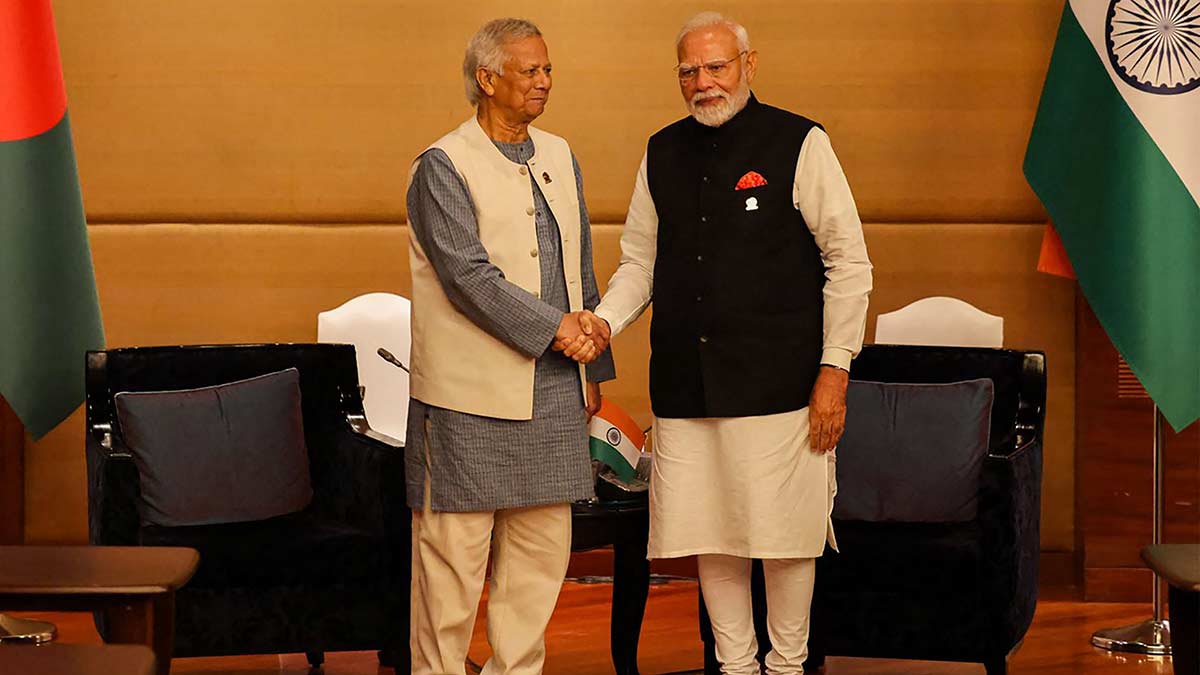OPINION | Trade ears in South Asia? Implications of India-Bangladesh trade restrictions

Trade relations between India and Bangladesh have entered a turbulent phase, marked by reciprocal restrictions that threaten to disrupt bilateral commerce. In a decisive move, India has barred at least seven categories of Bangladeshi goods—including ready-made garments (RMG), fruits, and processed foods—from entering through its land borders, allowing passage only through Kolkata and Nhava Sheva seaports. This policy shift follows Bangladesh’s earlier decision to prohibit Indian yarn imports via land ports, reflecting deepening trade tensions.
The ban, effective May 17, 2025, is poised to reshape commercial exchanges, significantly disrupting the flow of goods that previously travelled through more cost-effective land routes. Industry leaders in Bangladesh, particularly the Bangladesh Garment Manufacturers and Exporters Association (BGMEA), have voiced concerns over the increased logistical hurdles and expenses that businesses will now face.
BGMEA Administrator Anwar Hossain highlighted the adverse effects of rerouting exports through seaports, warning that extended shipping durations and elevated costs could undermine Bangladesh’s competitive edge in the Indian market.
With Bangladesh RMG exports to India reaching $563 million in the first ten months of the fiscal year 2024-25—and 93 per cent of shipments historically dependent on land routes—the policy shift presents significant obstacles. The rerouting of shipments through Kolkata forces exporters to absorb additional time and costs, potentially diminishing demand from Indian importers reluctant to bear the financial burden.
The Bangladeshi processed food industry is particularly affected, with PRAN-RFL Group, a major exporter, struggling to navigate the new restrictions. Previously, about two-thirds of PRAN’s $50 million worth of snack and beverage exports were destined for India’s northeastern states, a market deeply reliant on the convenience of land-based trade.
In response, Bangladeshi industry leaders and trade bodies are urging its governments to engage in diplomatic dialogue to ease trade disruptions. Calls for bilateral negotiations seek to resolve escalating tensions and restore a more seamless flow of goods between the two economies.
Director at Pran-RFL Group Kamruzzaman Kamal says that India is a major market for Pran-RFL Group's processed foods, plastic products, furniture, and PVC-finished goods, "We have made substantial investments in India to serve this market. If India imposes restrictions on the entry of these products, it would be a significant setback for our exports."
India, on its part, asserts that the restrictions align with broader domestic goals under the Atmanirbhar Bharat initiative—aiming to reduce reliance on foreign imports, foster indigenous industries, and boost manufacturing in the Northeast.
Reciprocal trade restrictions kicked off on April 9, when India withdrew its transhipment facility for Bangladesh, which previously allowed Dhaka to export goods to the Middle East, Europe, and other destinations—excluding Nepal and Bhutan—via Indian ports. The timing of this decision coincided with remarks made by Bangladesh's interim government Chief Adviser Muhammad Yunus during his visit to China. Yunus asserted that India's seven northeastern states, which share a 1,600-kilometre border with Bangladesh, are landlocked and rely on Bangladesh for ocean access. His statement sparked sharp political reactions across party lines in India, further complicating diplomatic ties.
The bilateral strain escalated on April 15, when Bangladesh enforced a ban on yarn imports through land ports. The move followed lobbying by the Bangladesh Textile Mills Association, which alleged that importers were exploiting land-port access to under-report shipments, thereby undermining domestic textile mills. This restriction added fuel to an already tense trade landscape. While India's order does not cite Bangladesh's yarn ban as the reason, many Bangladeshi exporters believe the move is retaliatory.
While critics argue that the abrupt policy shift risks destabilizing bilateral trade, proponents suggest that the move will stimulate growth for Indian manufacturers and protect local industries from the influx of low-cost foreign products.
Bangladesh imported approximately $9 billion worth of goods from India in FY2024, while its exports to India stood at a comparatively modest $1.56 billion. This imbalance raises critical questions about the broader implications of ongoing trade policies—while both nations face economic repercussions, India could arguably bear a greater loss given Bangladesh's high dependence on Indian imports.
As both countries navigate the complexities of shifting trade policies, of balancing economic protectionism with sustainable trade cooperation, the stakes remain high. India’s Northeast states, long viewed as captive markets for Bangladeshi goods, now stand to expand their domestic production capacity in response to the import restrictions.
Meanwhile, as 36 trucks laden with RMG products remain currently stranded at Benapole awaiting clearance, Bangladeshi exporters grapple with the uncertainty of adjusting to costly alternatives. Whether this phase of strained commerce leads to renewed negotiations or prolonged discord remains to be seen—but its impact on regional trade flows will undoubtedly shape future economic relations in South Asia.
Vaishali Basu Sharma is a security and economic affairs analyst.
The opinions expressed in this article are those of the author and do not purport to reflect the opinions or views of THE WEEK.
Business